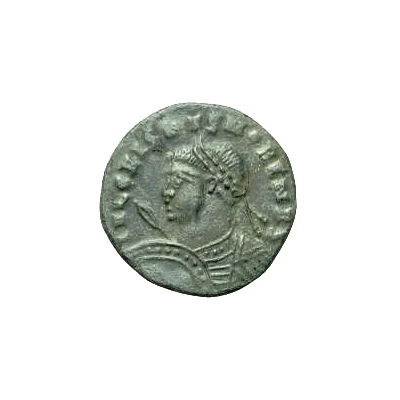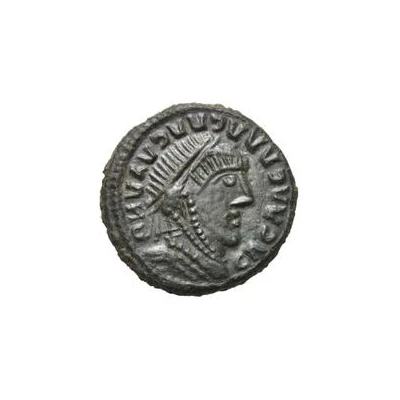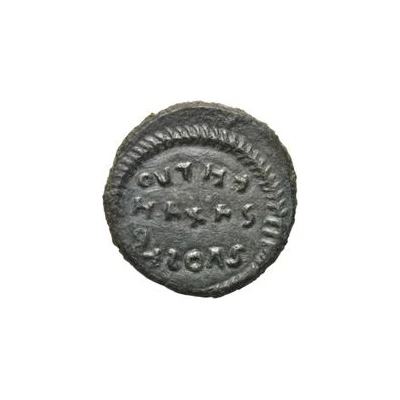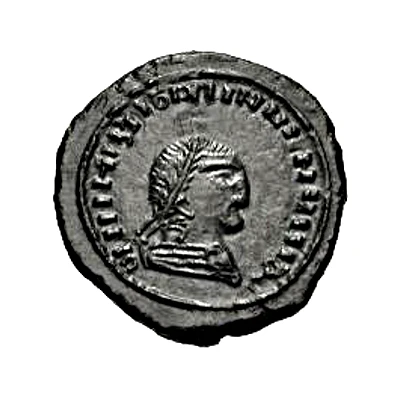
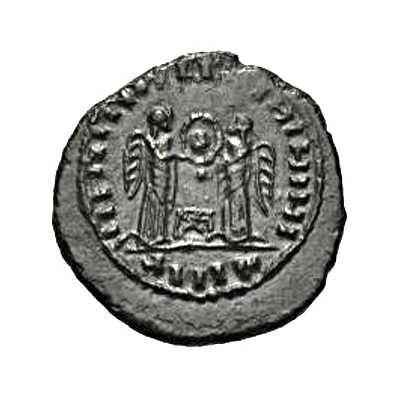

© Classical Numismatic Group, Inc.
Æ
| Bronze | 3.08 g | 18 mm |
| Issuer | Uncertain Germanic tribes |
|---|---|
| Type | Standard circulation coin |
| Years | 325-400 |
| Currency | Solidus (circa 301-750) |
| Composition | Bronze |
| Weight | 3.08 g |
| Diameter | 18 mm |
| Shape | Round (irregular) |
| Technique | Hammered |
| Demonetized | Yes |
| Updated | 2024-10-04 |
| Numista | N#165720 |
|---|---|
| Rarity index | 100% |
Reverse
Two winged Victories facing each other with podium in-between, all surrounded by legend.
Script: Latin
Lettering:
IIIIIIIIIIVII[...]IHIHIHI
HIIIH
Edge
Plain
Comment
This type is said to have been struck from the mid- to late-4th century. While this piece may be trying to imitate a coin from Crispus (317-326), the meaningless legend makes it impossible to know for certain.The denominations of bronze coins that are unknown to numismatists are referred to as Æ (AE), followed by the coin's diameter. The Æ part simply means the coin is made of a base alloy, and because the diameter of these coins is never exactly as intended, different numbers can appear after the Æ for the same type.
The exact lettering of the surrounding legend may vary; while some coins have legible legends, the legends of others may have been reduced to basically only lines.
Interesting fact
One interesting fact about this coin is that it features a unique blend of Germanic and Roman influences in its design. The coin's obverse (front) side depicts a stylized horse, which was a common motif in Germanic art, while the reverse (back) side features a stylized Roman imperial eagle, indicating the coin's connection to the Roman Empire. This blending of styles reflects the cultural exchange and fusion that occurred during the period of Roman expansion into Germanic territories.
